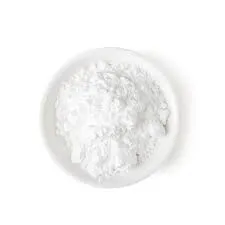Understanding Active Pharmaceutical Ingredients and Intermediates
In the realm of pharmaceuticals, the significance of Active Pharmaceutical Ingredients (APIs) and intermediates cannot be overstated. These substances form the backbone of drug formulation, determining a medication's efficacy, safety, and overall quality. This article aims to provide a comprehensive overview of APIs and intermediates, highlighting their roles, manufacturing processes, regulatory aspects, and future trends.
Defining Active Pharmaceutical Ingredients and Intermediates
Active Pharmaceutical Ingredients are the biologically active components in a drug that produce the intended therapeutic effect. For instance, in a pain relief tablet, the active component—such as paracetamol—directly interacts with the body to alleviate pain. Conversely, intermediates are compounds formed during the chemical synthesis of APIs. They serve as building blocks in the manufacturing process, often undergoing further chemical transformations to yield the final API.
Roles of APIs and Intermediates in Drug Development
APIs are crucial in drug development as they have direct pharmacological effects. The selection of an API involves extensive research and development (R&D) to ensure its effectiveness for specific conditions, stability during storage, and safety for consumption. Intermediates, while not active themselves, are vital for the efficient synthesis of APIs, impacting the yield, cost, and timeline for drug production. Understanding the chemical properties of intermediates can also enhance the optimization of the manufacturing process, leading to more sustainable and economical practices.
Manufacturing Processes
The manufacturing of APIs typically involves several complex stages, which may include synthesis, purification, and formulation. The synthesis of APIs often begins with the design of the chemical route, where chemists determine how to transform raw materials into intermediates and ultimately into the final product. Advanced techniques such as flow chemistry, biocatalysis, and green chemistry are increasingly being utilized to improve efficiency and reduce environmental impact.
active pharmaceutical ingredients and intermediates

Purification is another critical step, as it ensures that APIs meet stringent quality standards. Techniques such as crystallization, filtration, and chromatography are commonly employed to remove impurities and byproducts. Finally, the formulation stage involves mixing the API with excipients—substances that facilitate drug delivery but do not have therapeutic effects—resulting in a finished pharmaceutical product.
Regulatory Considerations
Given the importance of APIs in healthcare, regulatory agencies worldwide, such as the U.S. Food and Drug Administration (FDA) and the European Medicines Agency (EMA), enforce strict guidelines governing their quality, safety, and efficacy. Companies must adhere to Good Manufacturing Practices (GMP) to ensure consistency and reliability in API production. This entails thorough documentation, rigorous testing, and quality assurance measures at every stage of the manufacturing process. Regulatory compliance not only fosters trust among consumers and healthcare providers but also helps prevent detrimental health impacts from substandard products.
Future Trends
The landscape of API manufacturing is evolving rapidly, driven by technological advancements and changing industry demands. One major trend is the increasing use of continuous manufacturing processes, which offer greater efficiency and flexibility compared to traditional batch processes. Moreover, the rise of personalized medicine is pushing for more targeted drug development, necessitating the production of niche APIs tailored to individual patient needs.
Furthermore, sustainability has become a focal point, with companies exploring eco-friendly solvents, waste reduction techniques, and renewable resources for API synthesis. The ongoing shift toward greener practices not only aligns with regulatory expectations but also addresses growing public concerns regarding environmental impact.
Conclusion
Active Pharmaceutical Ingredients and intermediates are integral to the pharmaceutical industry, playing a critical role in drug efficacy and safety. Their manufacturing must adhere to stringent regulations to ensure high quality and reliability. As the industry continues to innovate and prioritize sustainability, the future of APIs is promising, offering opportunities for enhanced healthcare solutions and improved patient outcomes. Understanding the complexities of these substances is essential for stakeholders at every level, from researchers and manufacturers to regulatory bodies and consumers.

